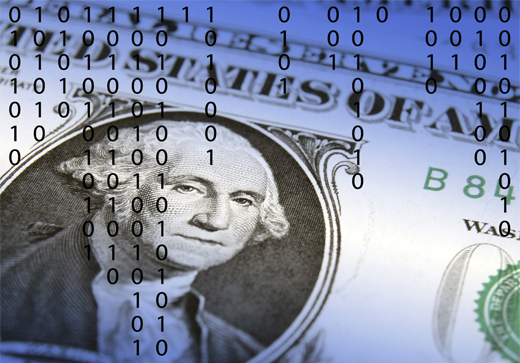PayPal’s Cash To Digital Roadmap

PayPal has had something of a “blink and you just might miss something” of a 2017 — and notably we are only halfway through the third month. As of the end of February, PayPal officially crossed the 200 million active user mark, as well as quietly noting that OneTouch has also corralled itself 50 million uses — not to mention 75 percent of the internet’s top 100 retailers.
But that, as they say, is last week’s news, and on a briefing call with analysts yesterday, PayPal COO Bill Ready was more interested in talking about how all of what’s come before is pushing toward what’s next — our favorite topic.
Specifically, he noted, PayPal is looking at the market and trying to figure out how to meet all those unmet (or undermet) consumer needs.
“From the very beginning, we’ve been a democratizing element for payments and financial services,” Ready noted, “so we’ve been pushing to broaden our aperture on both the merchant and consumer side. OneTouch, building complete checkout platforms for merchants, PayPal Credit, the cards we have put into the market with our Mastercard partnership — this is all part of a broader and broader set of ways we are looking [to] continue to push our capacity.”
And it is in that spirit, Ready explained, that PayPal chose to acquire cash-to-digital bill payments service TIO Networks for $233 million.
Cash-to-digital is not new to PayPal, who began pushing that product last year to make it possible for cardless users to load cash into a PayPal account in a 7-Eleven, for example, and to begin spending online almost anywhere.
But TIO offered PayPal something more: because, like its new owner, Ready noted, TIO is also a two-sided platform.
“They are [a] very two-sided platform, and they are able to reach a very large set of billers and do so at a very meaningful set of in-store locations — places like Rite Aid and Cricket Wireless — and they can then turn cash into a digital payment.”
And that network access, Ready said, allows PayPal to do two things: bring an underserved community of consumers onto the platform in a consequential way (improving their lives to boot); and offer more to their customers, potentially building out their current offerings more robustly.
Consequential Payments
Most payments are not life or death. If a consumer can’t get the goods or services they want, they will be disappointed, but it will be far from the end of the world.
Bills, however, are a different story. Consumers who don’t pay their electric bill, Ready said, face the very real possibility of having their electricity cut-off, as well as the very expensive reality of paying all the fees to get it switched back on.
And for one third of American consumers who report having difficulty paying all their bills — or the large swath of underbanked or unbanked Americans — bill pay pain only gets worse, as getting to a power company’s office may not be something doable without expending a lot of time, money and effort.
TIO, Ready noted, by first leveraging kiosks and then leveraging their POS-based software, essentially found a way to take the payments pain out of bills — aside from the cost itself.
“It really gets to the need we’ve been serving with our two-sided platform … [aspiring] to connect consumer[s] [to] merchant[s] in context[s] [and] places that would otherwise be difficult to do.”
That, according to Ready, is PayPal’s main strength — and why the TIO acquisition is also a boon for PayPal’s customers (who aren’t also TIO customers), because now they too have a new option to make paying their bills faster, easier and smoother.
“Every time consumers meet merchants in a new context, the consumer has to put in all this information. Every single time, unless we can bridge that connection; and we think across our user base there [are] a lot of consumers [who] have a use for the bill-paying services … as well.”
PayPal is hoping to make all context, even new ones, familiar.
Driving Democratization and Digitization
That point, Ready notes, is yet another instantiation of what PayPal is pushing with most of its projects: democratizing financial services and bringing the benefits of digital commerce to an ever-growing circle of users.
Ready was not quite … well … ready to answer specific questions to analysts about how exactly TIO will play in the full PayPal ecosystem, which includes players like Xoom and Venmo, noting that the deal was signed but not closed just yet.
But he was able to offer at least some interesting teases.
“We are thinking about how we can better serve the underserved constituents in our consumer base — and how we can give access to a wider range of types of services. We can do a great [number of] things, especially by using our scale and ability to broadly support this while giving [a] wider base of consumers access — making a profitable transaction for us.”
So everybody wins? Well, that seems to be the goal anyway, and one that Ready says PayPal has something of an interesting advantage in pursing.
“When we talked about the move to mobile — and were saying it would be the primary computing device in 2010 — people thought I sounded crazy. The iPhone was a couple years old, and there was no iPad,” Ready reminisced of the push toward mobile dominance. “But the interesting thing is, in the U.S. it has become primary; in most countries, mobile is the first computer device with connected access.”
PayPal’s mobile strength, according to Ready, dovetails nicely with their goal of “democratizing access for underserved people around the world.”
There is, admittedly, a long way to go. But PayPal is certainly motivated.
And given their pace so far in 2017, you can’t argue they are going anywhere slow.